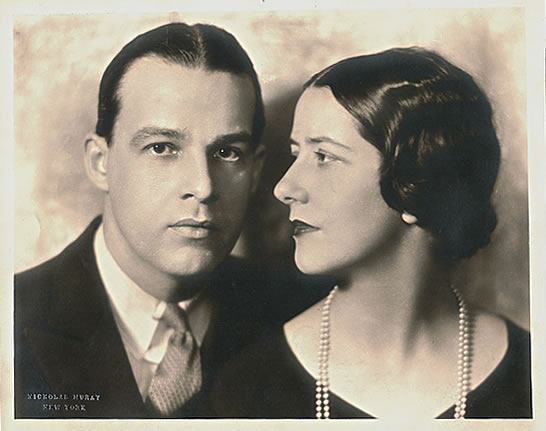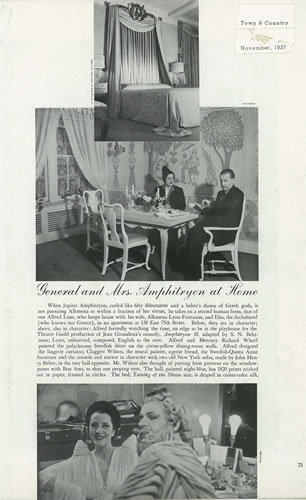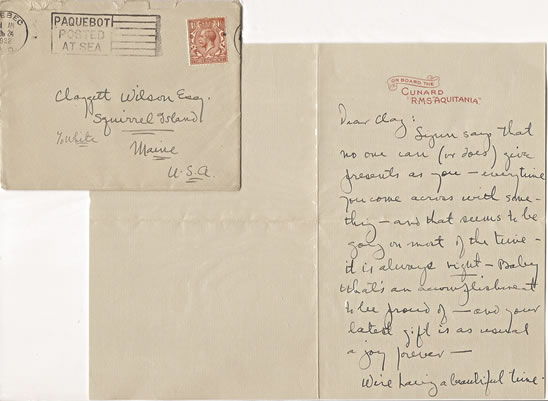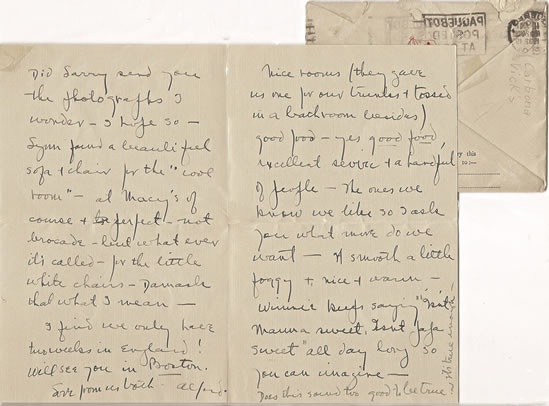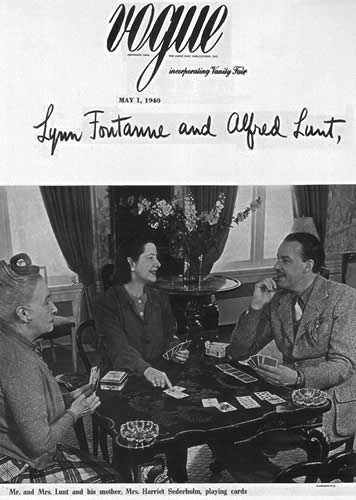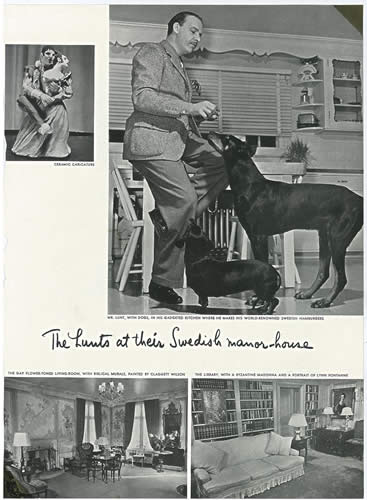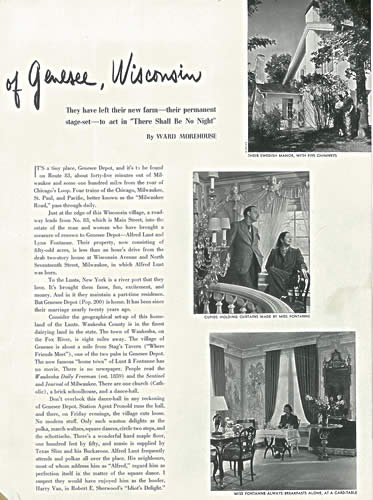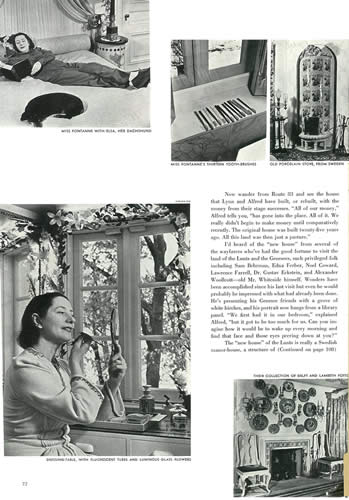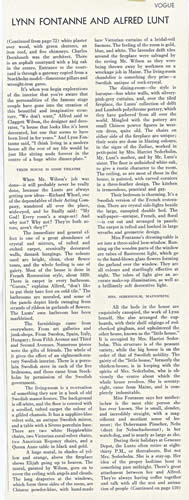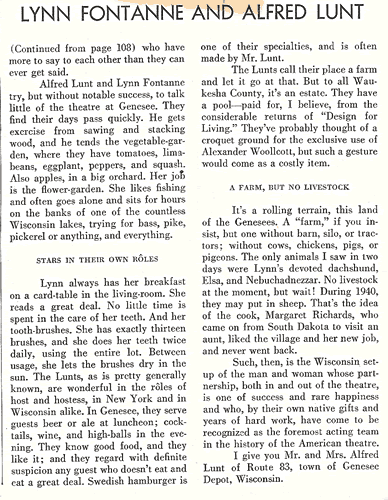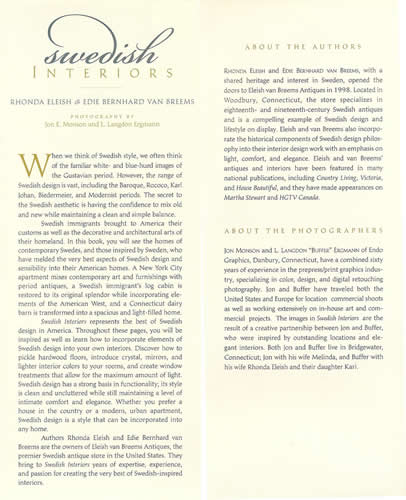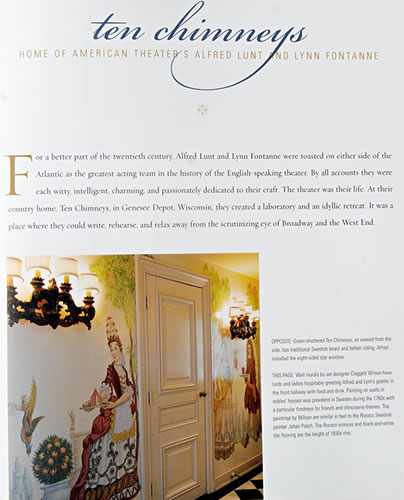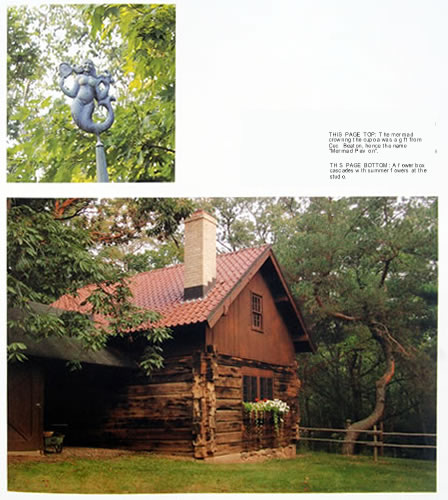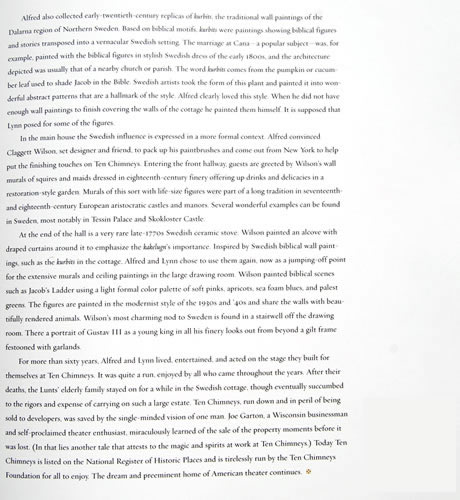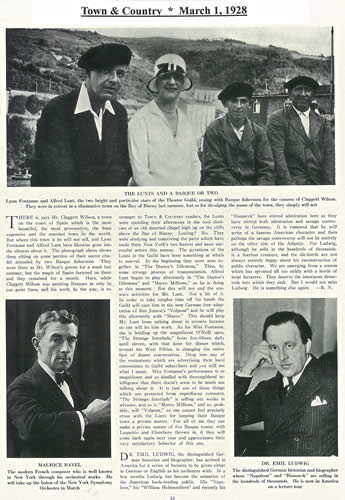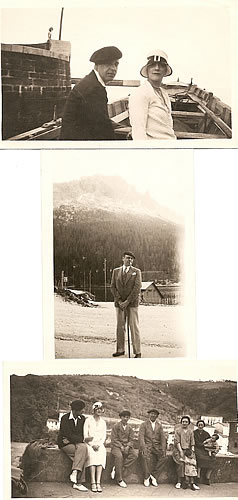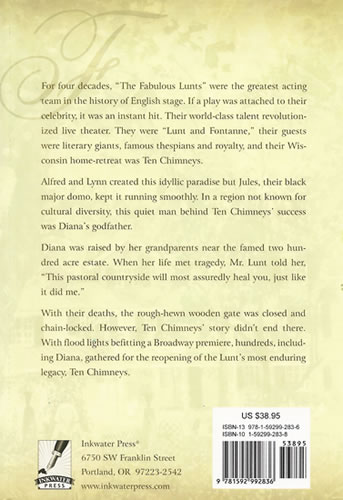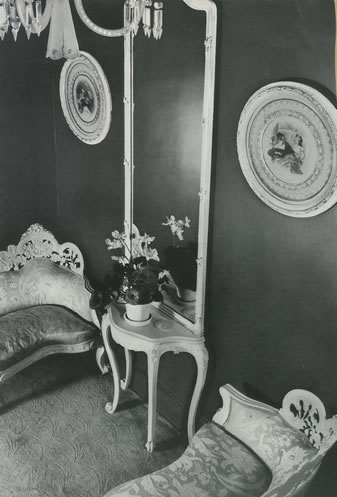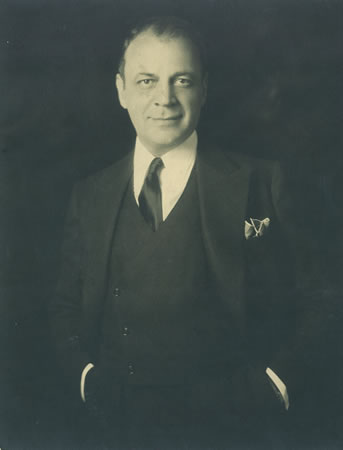
Claggett Wilson was "a dear friend" of the famed Broadway acting team, Alfred Lunt and Lynne Fontanne. He designed the set and costumes for "The Taming of the Shrew" in which the Lunts appeared. Ten Chimneys, the Lunt's Wisconsin home, became the backdrop for Mr. Wilson's considerable talents as a decorator and muralist.
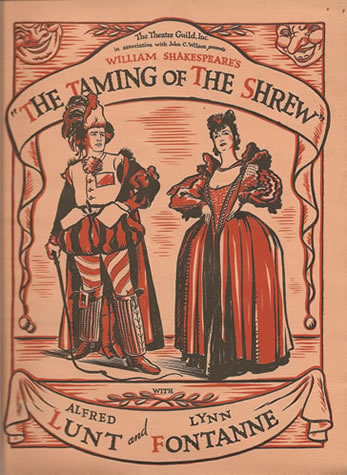
Production & Costumes by Claggett Wilson
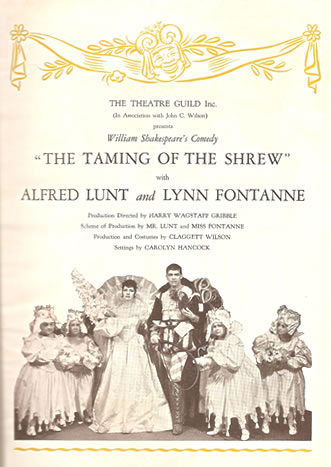
Production & Costumes by Claggett Wilson
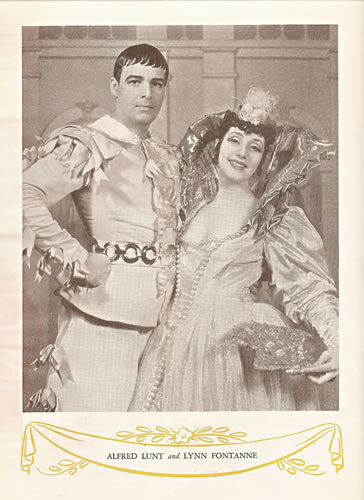
Production & Costumes by Claggett Wilson
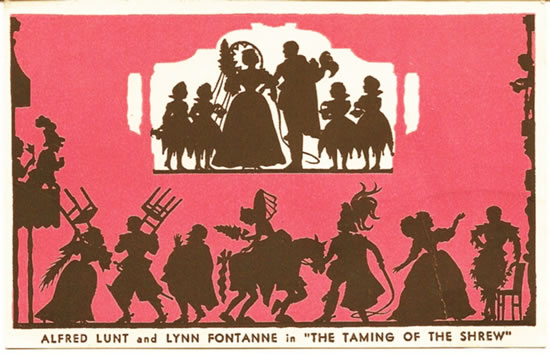
Postcard by Claggett Wilson
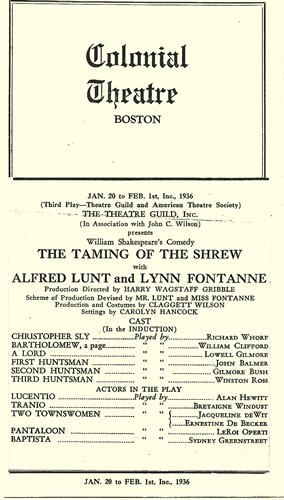
Colonial Theatre program
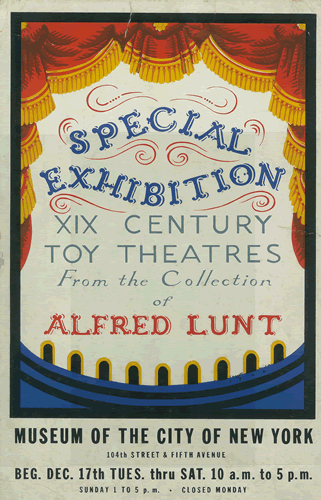
Poster by Claggett Wilson, 1946
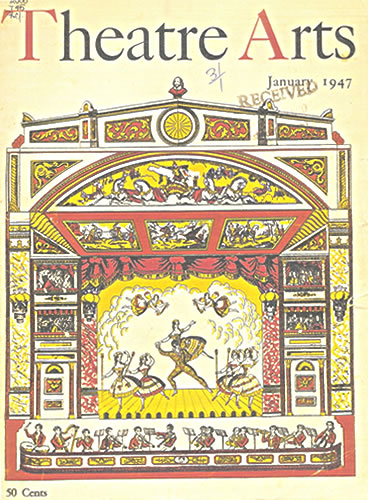
"Tuppence Colored" by Claggett Wilson
(Learn more on tinsel prints and tuppence colored prints
at the Ten Chimneys' website)
(Learn more on tinsel prints and tuppence colored prints
at the Ten Chimneys' website)
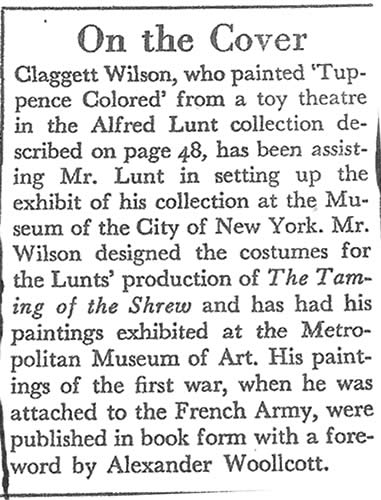
From "Theatre Arts"
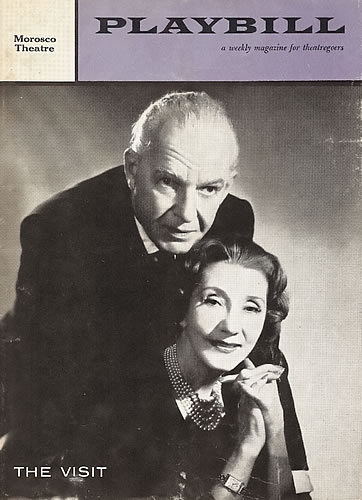
1958, Claggett Wilson Read went back stage and met the Lunts.
The Visit was their final Broadway stage performance.
The Visit was their final Broadway stage performance.
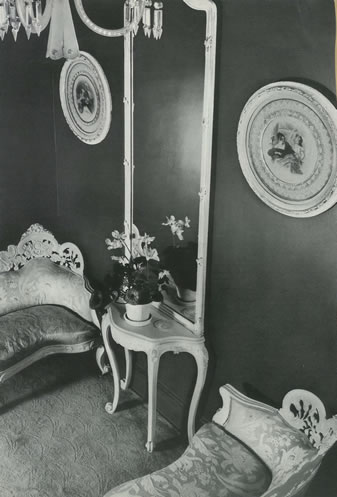
The Lunt's New York City apartment. Town & Country article, November, 1937.
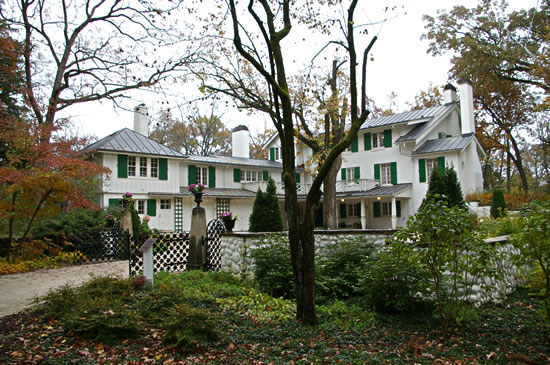
Claggett Wilson executed the murals, furnishings, and decorations
at Ten Chimneys, Genesee Depot, Wisconsin
at Ten Chimneys, Genesee Depot, Wisconsin
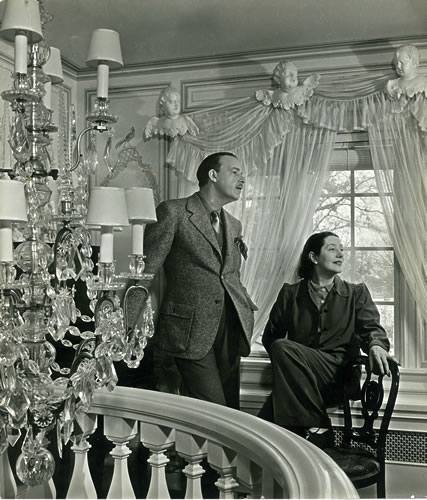
The Lunts in the upper hall; walls are painted in grisaille with farm scenes
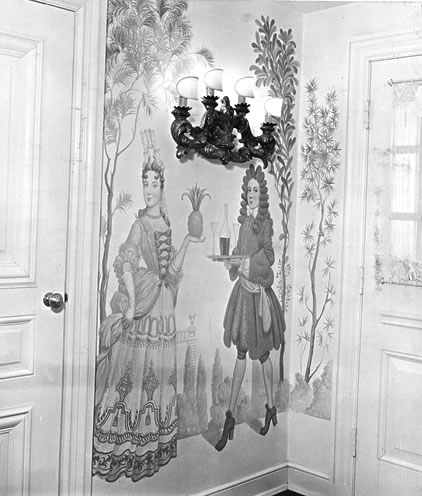
Mural detail in the entrance hall.
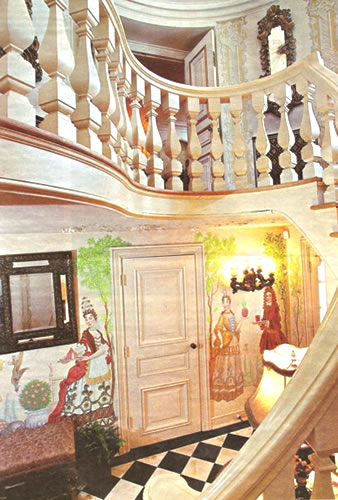
Entrance hall
Photograph by Rick Wood
Photograph by Rick Wood
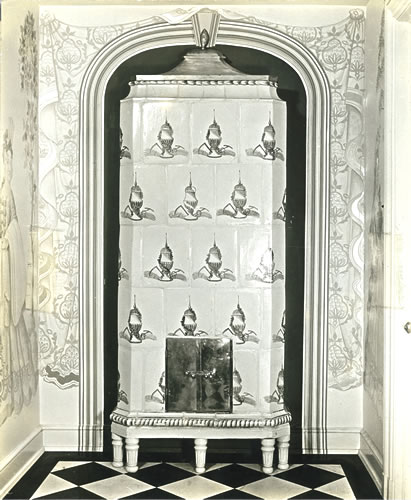
Entry: antique porcelain stove imported by
special permission of Swedish government
special permission of Swedish government
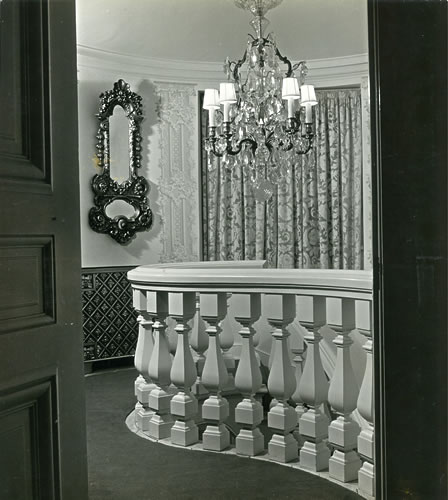
Upper hall: the mirror (one of a pair) from the palace of Schonbrunn, Vienna
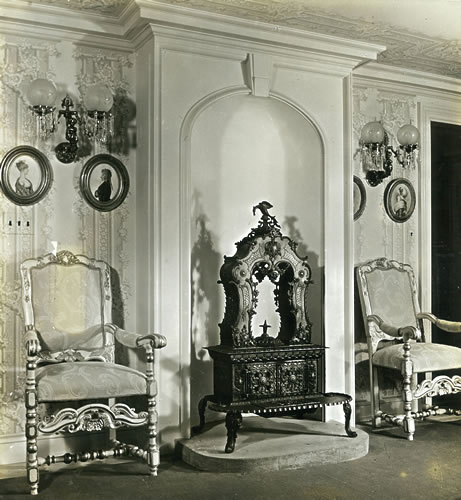
"Flirtation Room", 18th century Swedish chairs, the stove is from Vermont
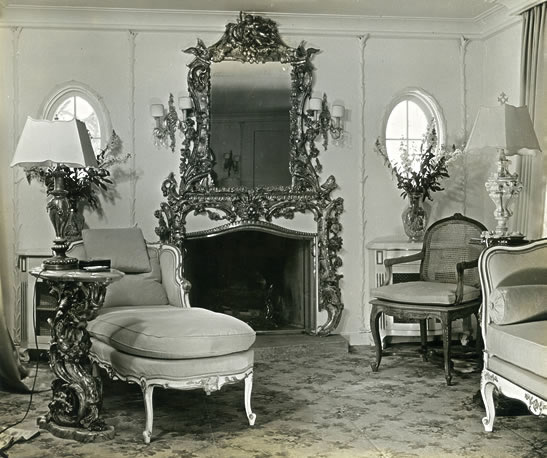
Morning room in yellow, white, gray and gold
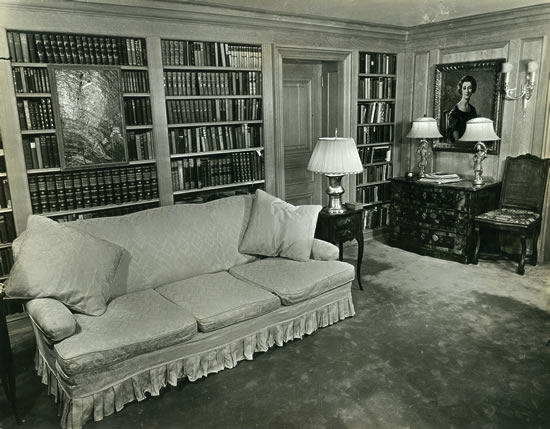
Library: Lynn's portrait by Alfred DeGlen was exhibited at the Royal Academy
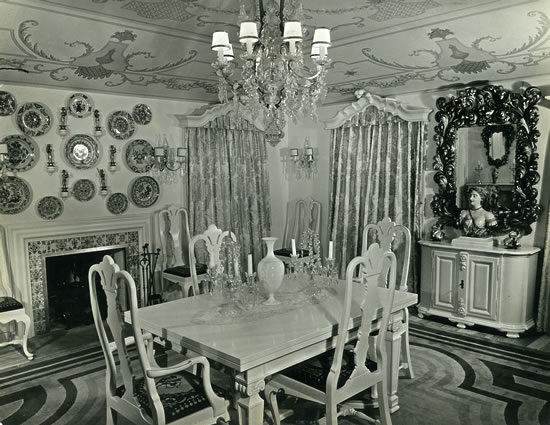
Dining room: Claggett Wilson designed the furniture,
rug, lighting, murals et cetera
rug, lighting, murals et cetera
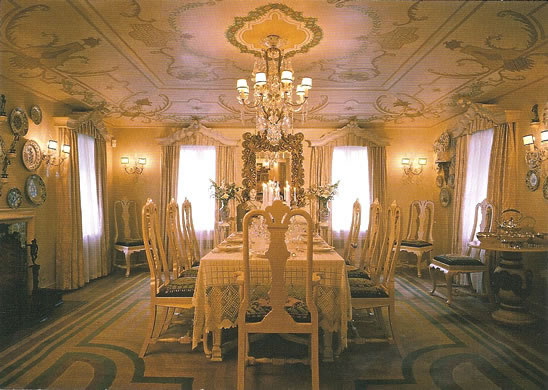
Dining Room - photo by Zane Williams
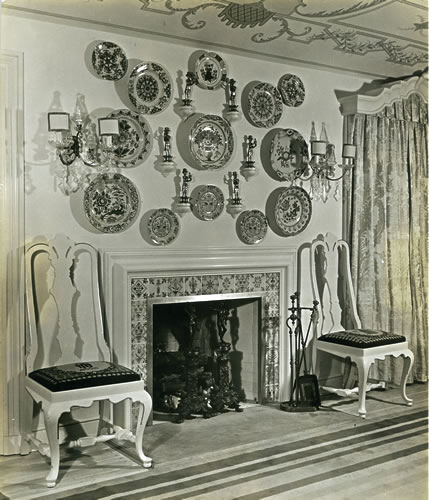
Dining Room: 18th century Delft fireplace tiles from Brunswick, Maine
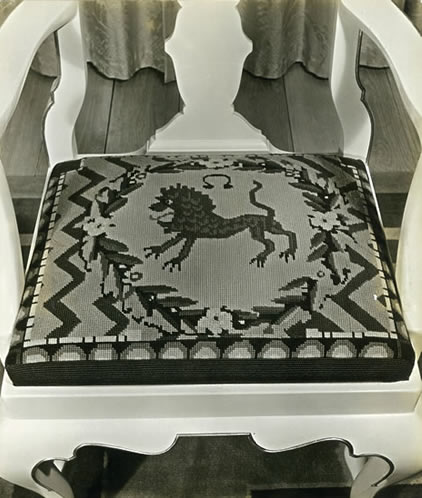
Lynn's chair, one of 12 Zodiac signs designed by Claggett Wilson
and executed by Lunt family members.
and executed by Lunt family members.
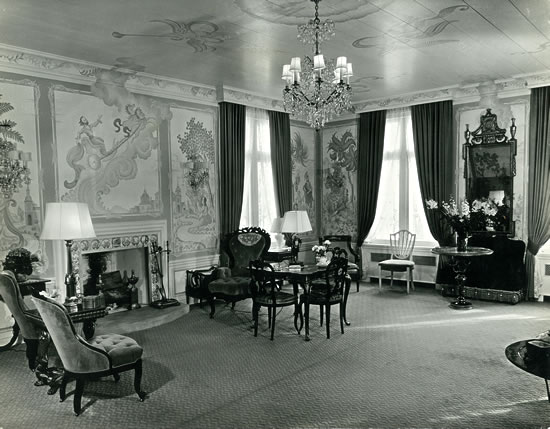
The Great Parlor: biblical scenes painted in the primitive Swedish manner
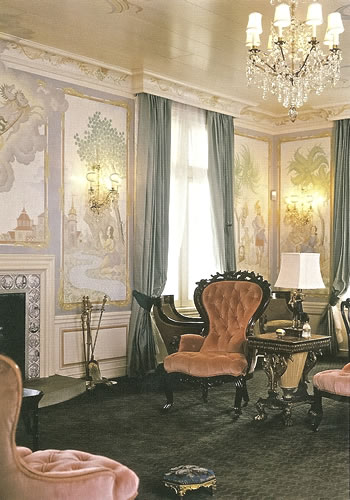
The Great Parlor - photo by Kate Roth
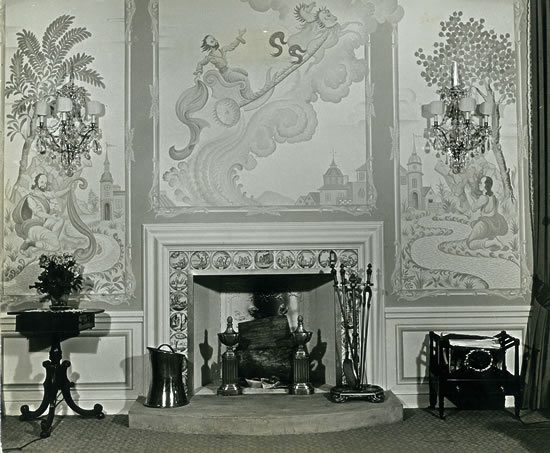
The Great Parlor: murals painted in the primitive Swedish manner
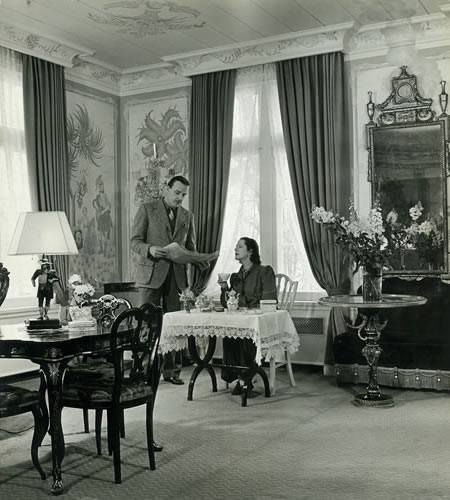
The Lunts at breakfast in the Great Parlor
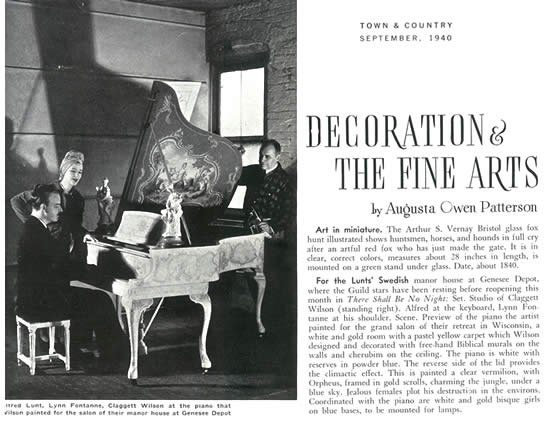
The Lunts playing their newly painted piano in Claggett Wilson's studio
(click image to view article)
(click image to view article)
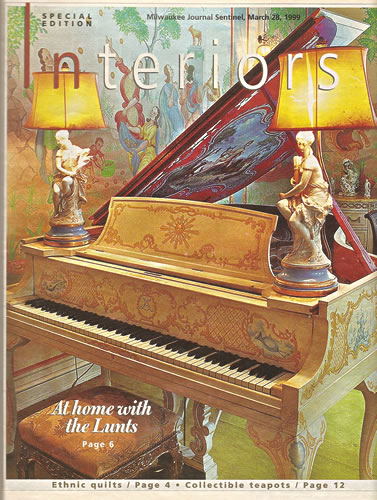
Piano painted by Claggett Wilson for the Great Parlor
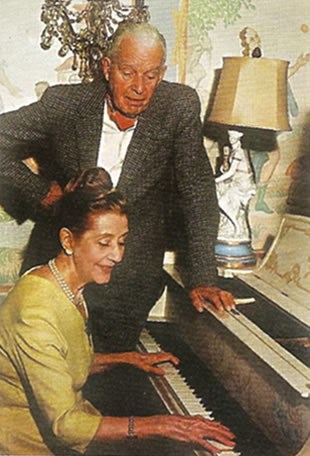
The Lunts still enjoying the piano
Photograph by James Auer
Photograph by James Auer
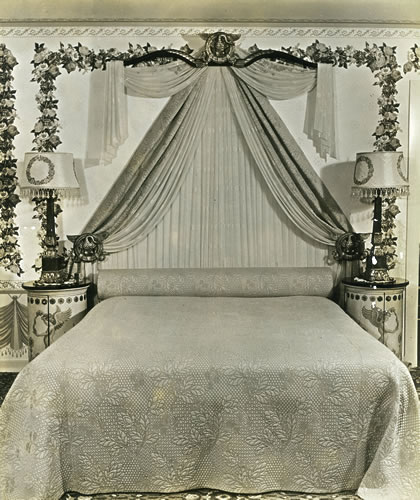
The master bedroom

Master bedroom: 18th century Swedish porcelain stove
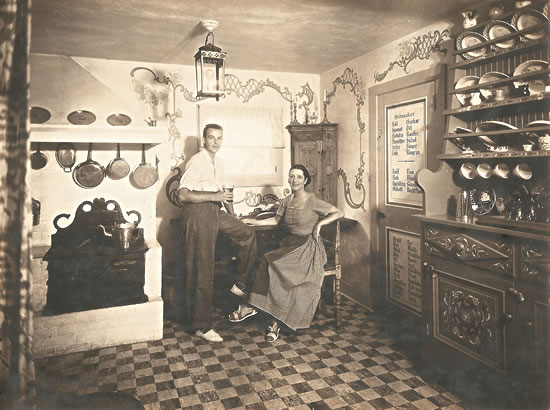
Alfred and Lynn in the kitchen at "The Hen House", formerly known as "The Honeymoon Cottage", where they lived as newly weds. Design and decoration by Claggett Wilson. "...It was Claggett Wilson who furnished the entire kitchen...utensils and all." (Reminiscences of Alfred Lunt & Lynn Fontanne by Carolyn Every, the Lunt's cook).
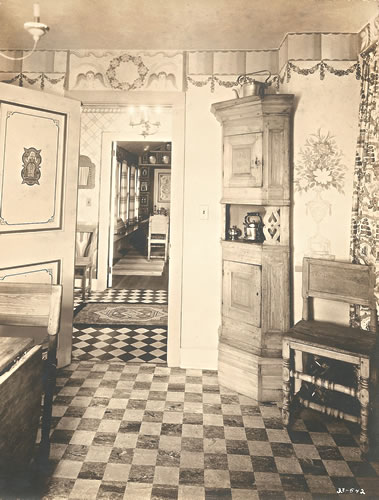
The Cottage Kitchen designed and decorated by Claggett Wilson
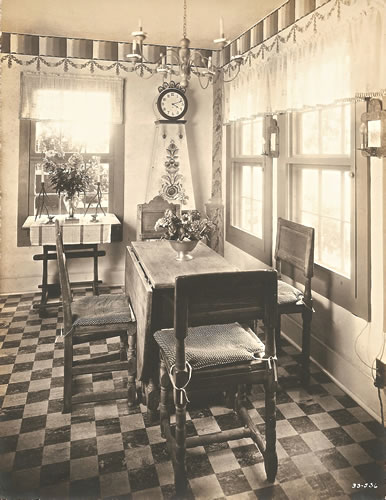
The Cottage Kitchen designed and decorated by Claggett Wilson
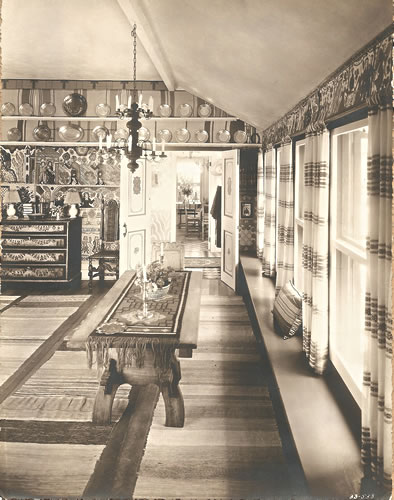
The Cottage Drawing Room designed and decorated by Alfred Lunt
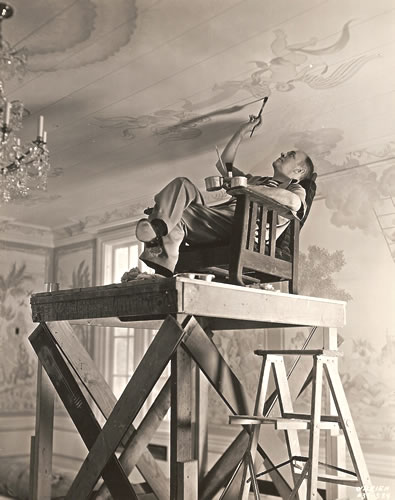
Claggett Wilson at work in the Great Parlor
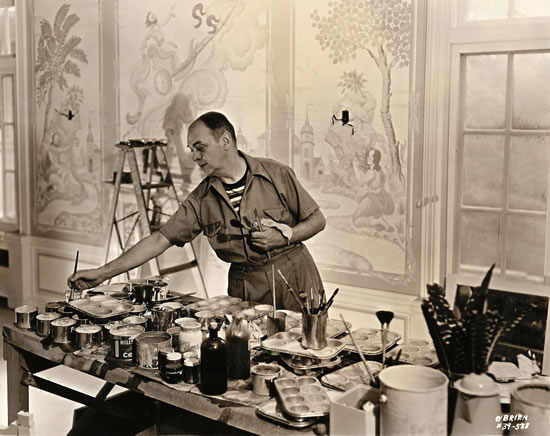
Claggett Wilson at work in the Great Parlor
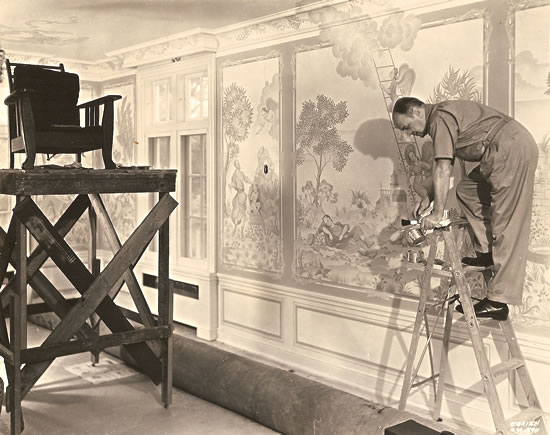
Claggett Wilson at work in the Great Parlor
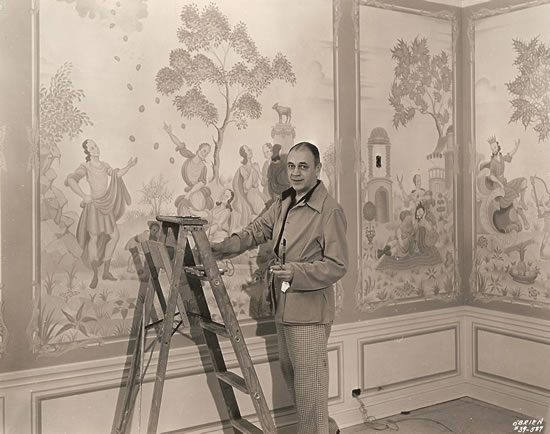
Claggett Wilson at work in the Great Parlor
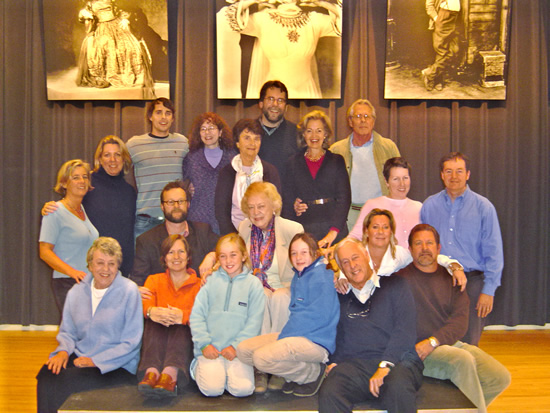
"Wilson Clan" at Ten Chimneys, October 2006
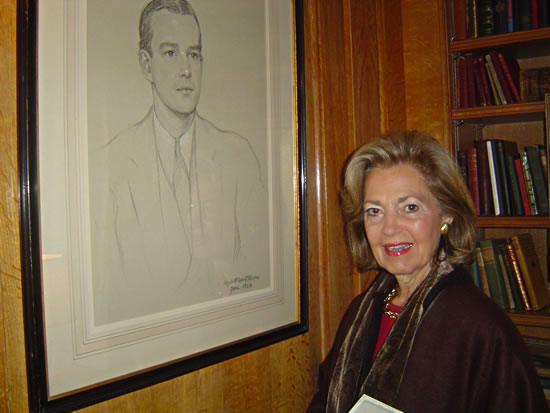
A beautiful star admiring a portrait of Alfred Lunt
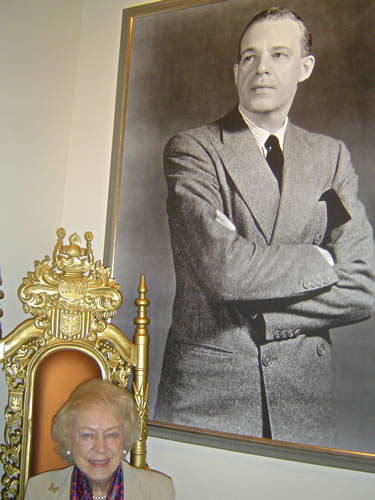
Helen W. Eckel, Claggett Wilson's niece, and Alfred Lunt at Ten Chimneys, 2006
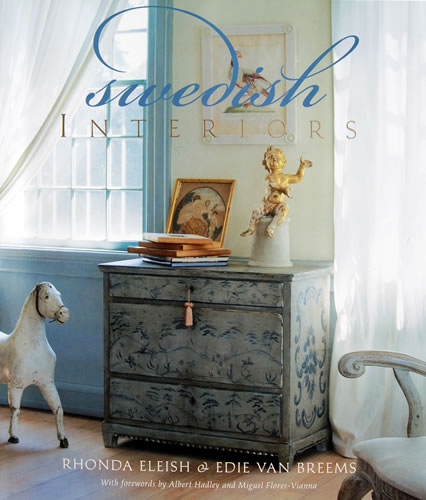
Visit www.evbantiques.com for book information and to view Eleish van Breems Swedish Antiques, Woodbury, Connecticut
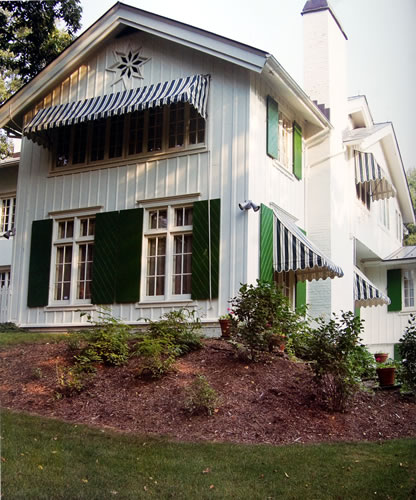
Green-shuttered Ten Chimneys, as viewed from the side, has traditional Swedish board and batton siding. Alfred installed the eight-sided star window.
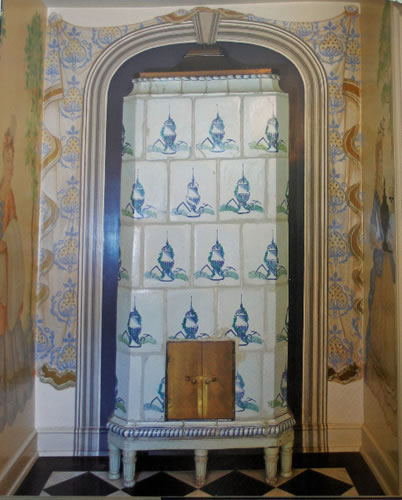
A rare eighteenth-century Swedish kakelugn stands at the end of the front hallway. A trompel'oeil proscenium with drapery frames the stove. Kakelugns can be tricky to install properly and usually an expert from Sweden needs to be sent in when reconstructing an authentic one.
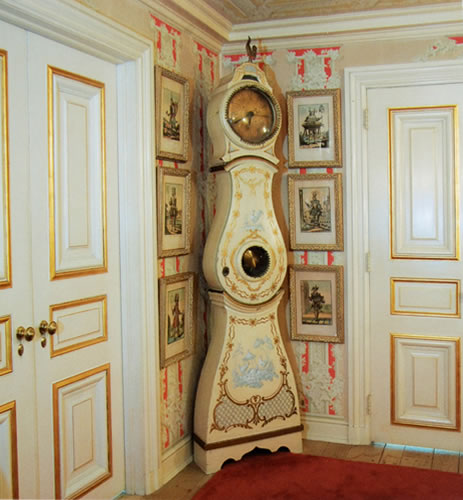
Alfred and Lynn loved to rehearse for their latest play in the "flirtation room" because of its many doors. Note the Swedish tall case clock over-painted and embellished into a gilt confection, complete with grisaille French chickens and pastoral scene. The rooster on the top of the clock is made of brass.
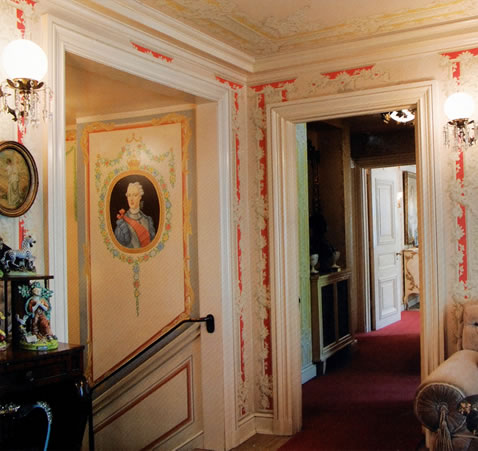
From the "flirtation room" you have a clear view of the bedroom hallway and stairwell, complete with Claggett Wilson's portrait of Gustav III. The wall treatment is decoupage that Alfred and Lynn cut out and pasted there.
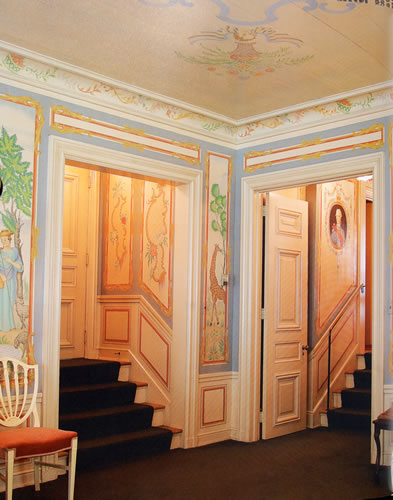
Alfred and Lynn had Claggett Wilson paint biblical scenes on the walls and ceiling of the great drawing room derived from paintings in Swedish manor houses and castles of the 1740s to 1780s. The paintings by Wilson are done in soft shades of apricot, pale yellow, and sea foam greens and blues.
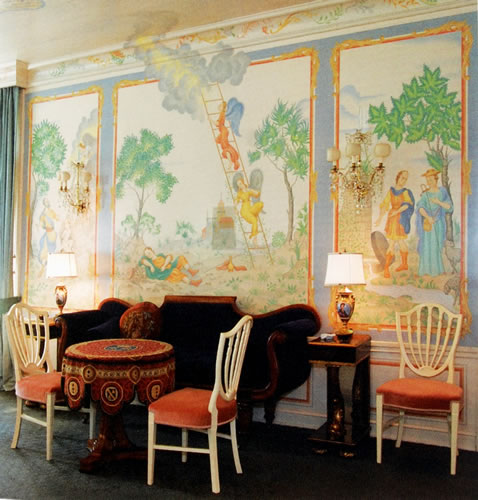
A depiction of Jacob's Ladder is the focal point of the wall in the drawing room.
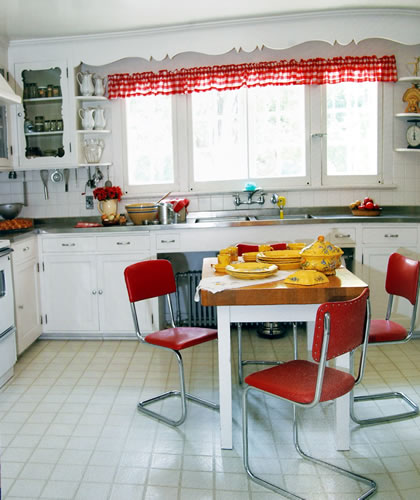
Alfred, a gourmet cook, would indulge his love of all things culinary in the spacious kitchen. He reveled in growing his own vegetables and berries and kept a creamery on the property. The red-checked curtain and charming scallop-edged wood valance lend the kitchen a Swedish air.
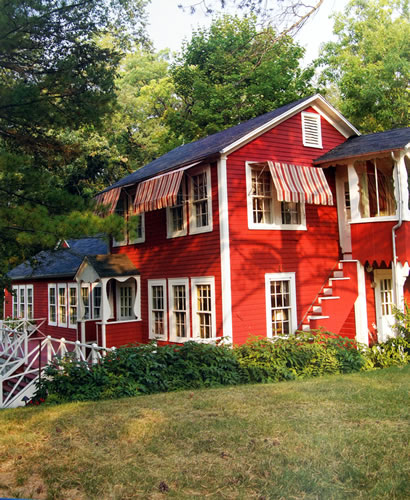
The cottage was known affectionately as "the Hen House" because it had once been the chicken coop and later was where Alfred's mother stayed. Painted red with crisp white trim, the cottage is the very vision of the Swedish countryside with the addition of some stylish 1930s-style red-and-white-striped awnings.
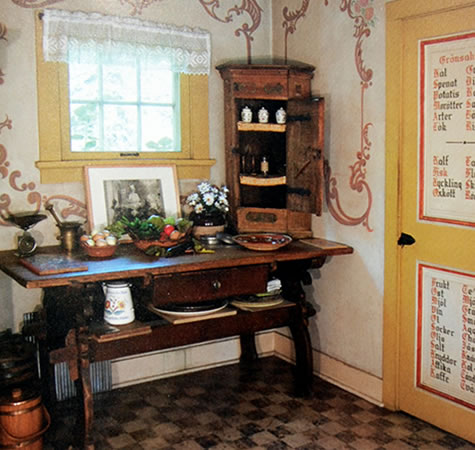
The kitchen in the cottage has theatrical borders painted on the walls as if to emphasize the stage-set quality of a Swedish stuga transposed to twentieth-century Wisconsin. A seventeenth-century Swedish hanging cupboard sits on a rare red-painted Baroque Swedish double trestle table. The lettering on the door is Alfred's grocery list in Swedish. The word fisk is painted in red...speculation on this abounds. Is it Alfred's red herring?
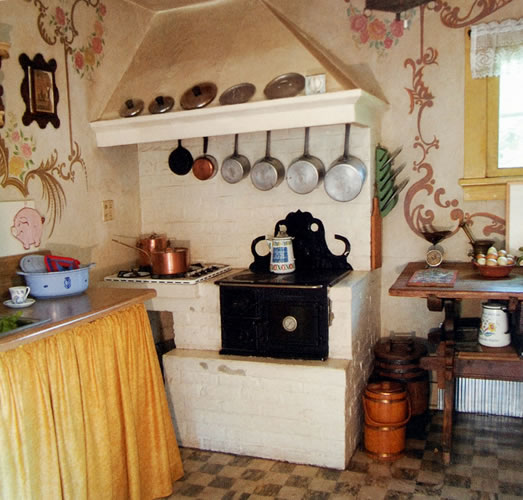
The corner stove has a charming faux backsplash in black.
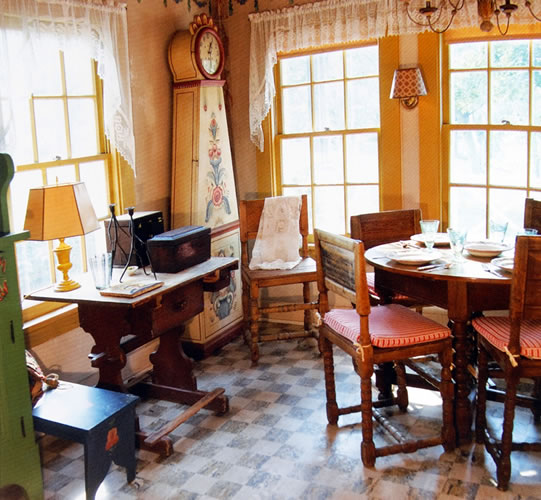
A traditional nineteenth-century wood-and-wire chandelier hangs over the breakfast table in the kitchen. Cushions add comfort to antique Swedish pine farm chairs. The stencil border around the kitchen was painted by Alfred, who left all of the pencil marks from the outlines, as is done on stage scenery.
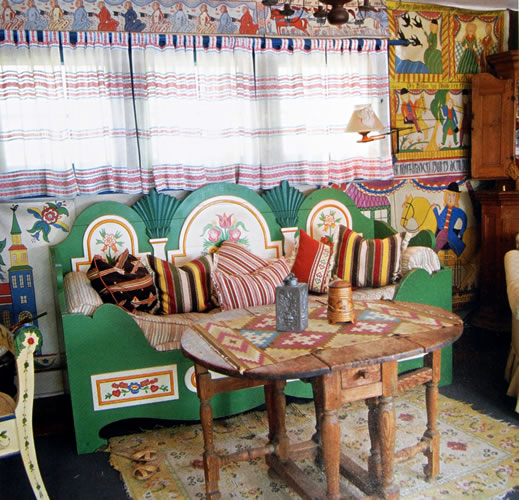
An eighteenth-century Swedish gate leg table sits in front of a bed decoratively painted by a Swedish-American artisan from the early part of the twentieth century. A beautifully made bed, resplendent with linens, was a sign of prestige in peasant homes.
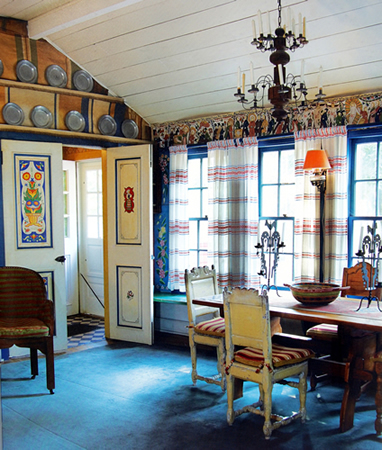
Light streams through the living room windows of the cottage, which are softly curtained by Swedish textiles. All manner of built-in cabinetry was used in stugas. Typically, a long built-in bench was installed to provide seating and storage along the wall facing the kitchen table. Early nineteenth-century iron candlesticks flank a wooden bowl on the table. This kind of candlestick derives from medieval Swedish smith work.
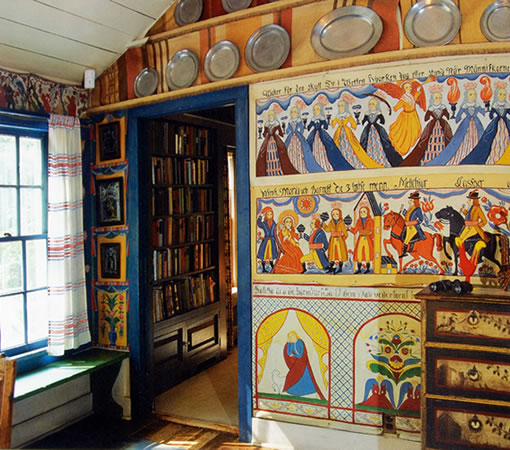
The wall of the cottage living room is papered with turn-of-the-century wall paintings in the style of Sunnerbo, Sweden. Around 1875 paper became widely available and instead of painting on canvas the Sunnerbo artisans were able to produce decorative hangings in mass. These appear to have been bought by Alfred on his travels. There were not enough hangings to finish the room so Alfred painted the rest himself.
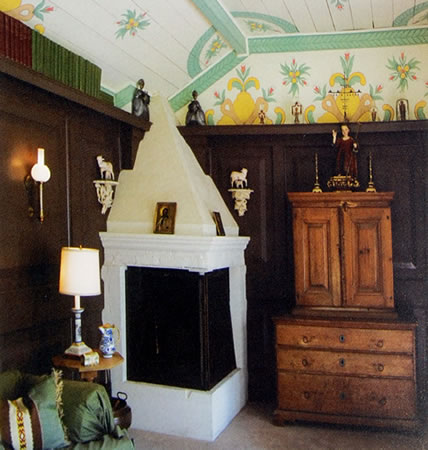
The hearth was the heartbeat of the stuga home, providing
necessary warmth in the harsh Swedish climate. In the cottage's library, Alfred had a fireplace built in the traditional Swedish manner of the nineteenth century -- built into a corner and sticking out at a diagonal into the room. Stylized kurbits patterns adorn the ceiling.
necessary warmth in the harsh Swedish climate. In the cottage's library, Alfred had a fireplace built in the traditional Swedish manner of the nineteenth century -- built into a corner and sticking out at a diagonal into the room. Stylized kurbits patterns adorn the ceiling.
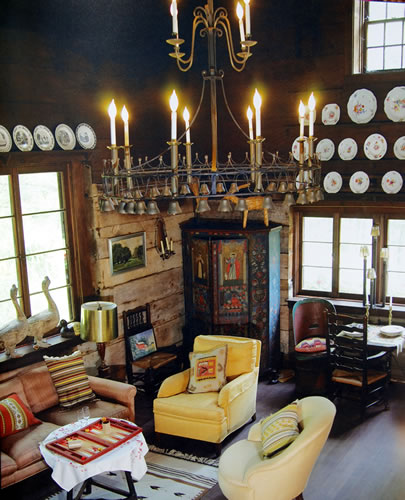
A grand metal chandelier ringed with bells hangs from the vaulted ceiling of the timber-framed studio. Plate racks line the walls as would be traditional in a stuga. A rare pair of Norwegian barrel chairs sits by the window. The pillows adorning the furniture are made of Swedish textiles.
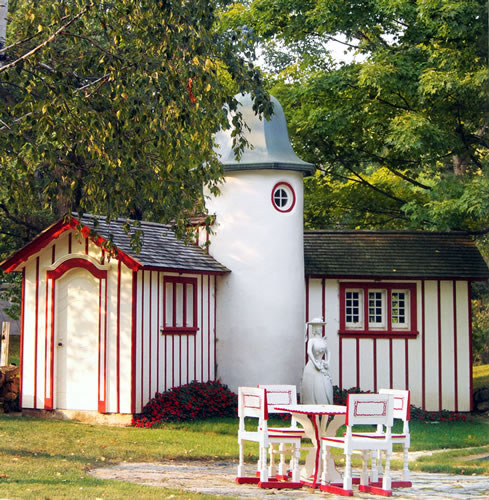
Claggett Wilson designed this pool house, and the tower actually conceals a pump that carries water up to the cupola for showers. A group of nineteenth-century Swedish farm chairs, painted white and red, cluster
around a table for alfresco dining.
around a table for alfresco dining.
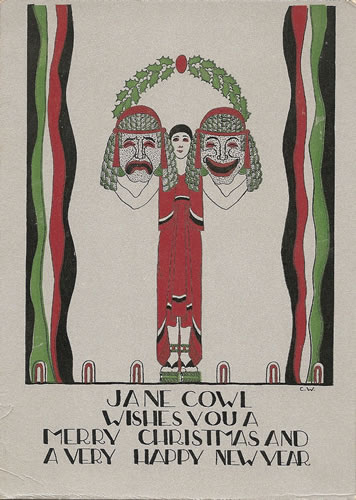
Claggett Wilson's design for Jane Cowl's Christmas Card
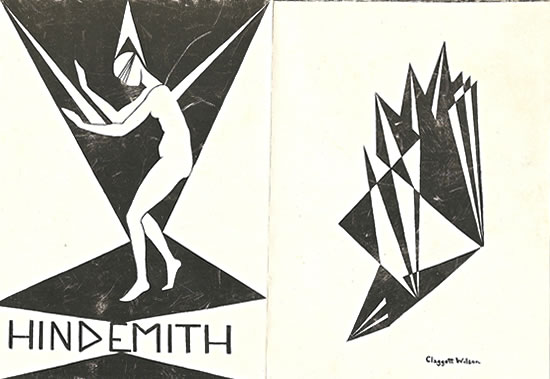
A concert program by Claggett Wilson
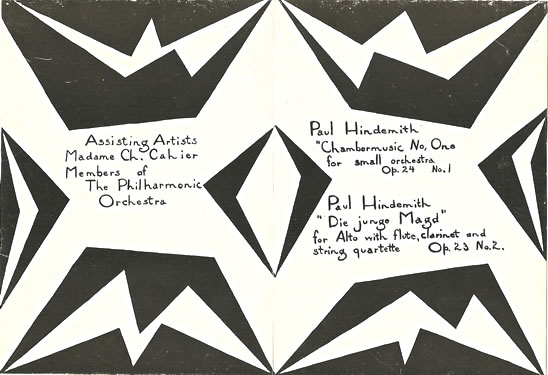
A concert program by Claggett Wilson
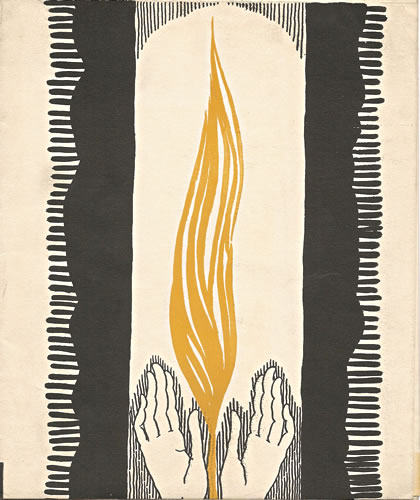
A concert program by Claggett Wilson
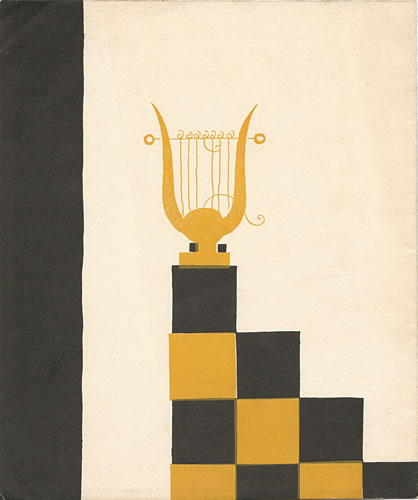
A concert program by Claggett Wilson
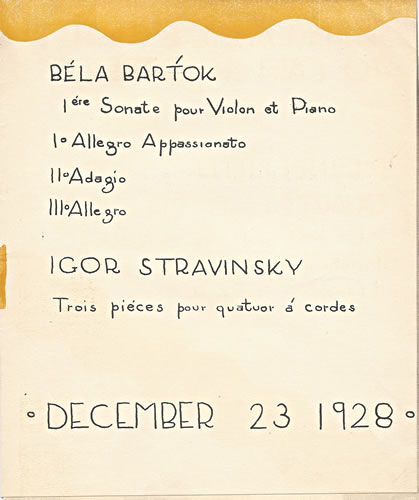
A concert program by Claggett Wilson
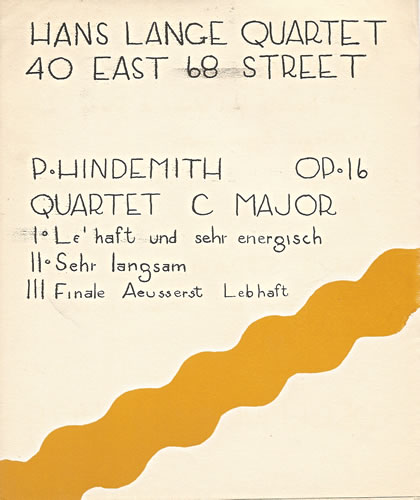
A concert program by Claggett Wilson
(Hans Lange)
(Hans Lange)

Transcript of the address given at Ten Chimneys
by Helen W. R. Eckel (Claggett Wilson's niece), October 21, 2006
(click image to view complete document)
by Helen W. R. Eckel (Claggett Wilson's niece), October 21, 2006
(click image to view complete document)
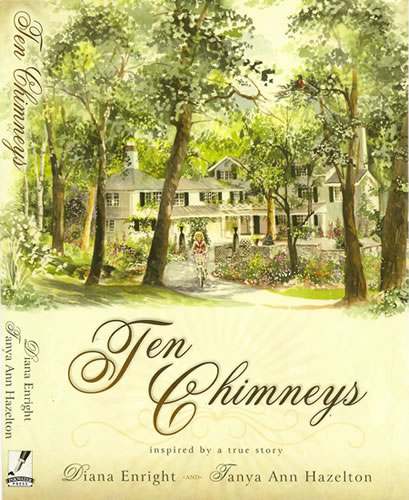
Cover of the novel, Ten Chimneys
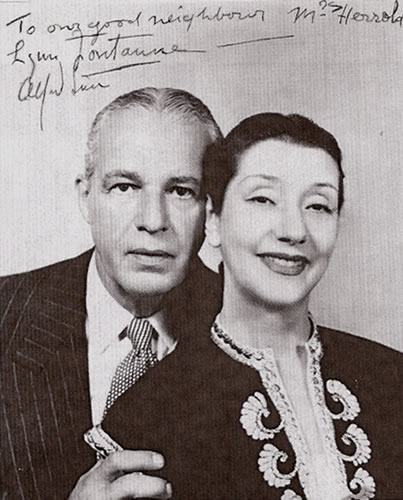
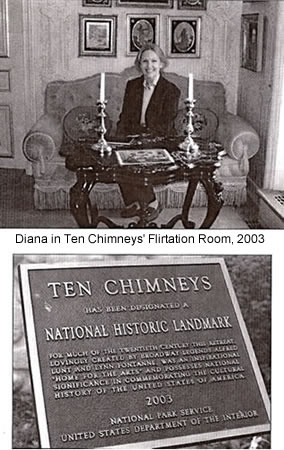
Diana Enright has lived in California for over forty years where she and her husband own Estate Mortgage Corporation. After retiring four years ago, Diana consumed herself in the writing of this labor of love. She will now focus on family, including five grandchildren, and dear friends. Diana will continue her yearly visits to Ten Chimneys.
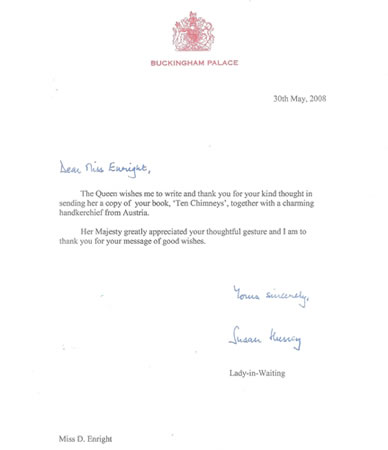
A thank you note from Buckingham Palace. Queen Elizabeth's interest in a copy of the novel "Ten Chimneys" is linked to a request that Lynn Fontanne (A British subject) be posthumously honored with Knighthood for the contribution that she and Alfred Lunt made to the war effort while living and performing in England.
(click image to view larger document)
(click image to view larger document)
© 2008 Claggett Wilson Read | contact: info@claggettwilson.com
No item on this site is to be copied or used for any reason, except by written permission.








